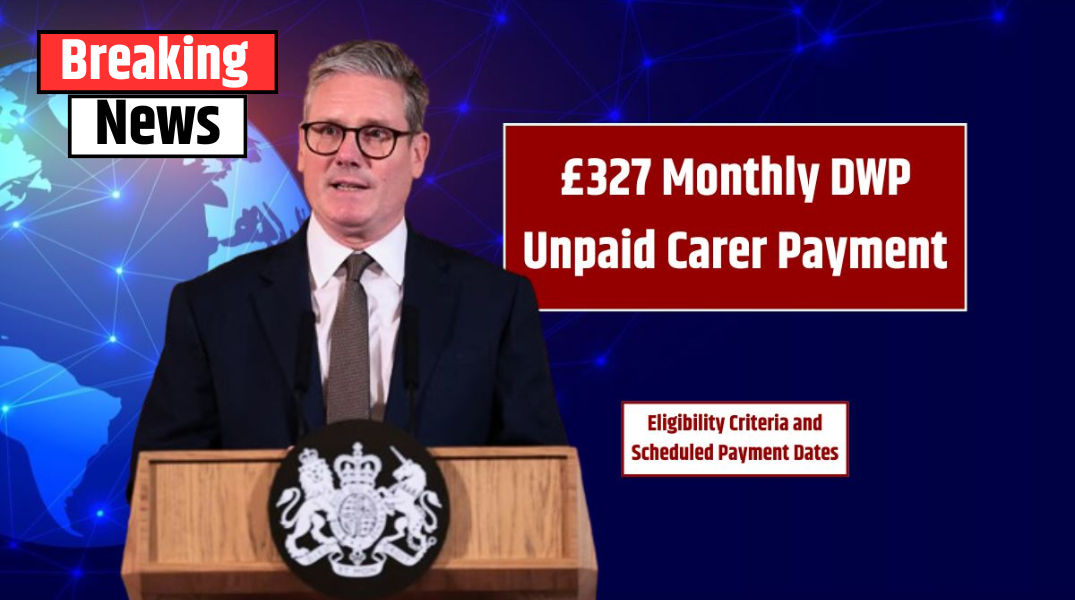Every day across the UK, millions of people quietly step into the role of unpaid carer—often without even calling themselves one. Whether you’re helping a parent with dementia, supporting a partner through chronic illness, or checking in on a disabled friend regularly, you could be entitled to Carer’s Allowance—a lifeline that provides £327.60 every four weeks.
But many eligible carers never apply. Why? Because they don’t realise they qualify, or they’re unsure how to navigate the system. This guide breaks it all down, with clear steps, insider tips, and real-world advice.
What Is Carer’s Allowance?
Carer’s Allowance is a government benefit for people who provide unpaid care to someone with significant health or disability needs. If you’re caring for 35 hours a week or more, and the person you care for receives specific benefits, you may be able to claim.
It’s not just about the money—though every penny helps in tough times. It’s official recognition of your contribution.
2025 Carer’s Allowance Rates
| Frequency | Amount |
|---|---|
| Weekly | £81.90 |
| Four-weekly (default) | £327.60 |
You can choose to be paid weekly or every four weeks, straight into your bank account.
Do You Qualify?
Before applying, make sure you meet all the criteria below:
👤 You must:
-
Be 16 or older
-
Provide at least 35 hours of care per week
-
Earn less than £151 a week after tax, National Insurance, and certain expenses
-
Not be in full-time education (21+ supervised hours weekly)
-
Live in England, Scotland, or Wales
🧓 The person you care for must get one of the following:
-
Personal Independence Payment (PIP) – daily living part
-
Disability Living Allowance (DLA) – middle or higher care rate
-
Attendance Allowance
-
Armed Forces Independence Payment
Even if you don’t live in the same household, you can still claim if you’re providing hands-on or emotional support.
Real Example
Asha, 34, cares for her autistic son full-time while working part-time in retail. After allowable deductions, her income is £130 per week—below the £151 limit. She spends over 35 hours each week managing his therapies, school coordination, and daily support. Thanks to Carer’s Allowance, she receives an extra £327.60 a month, which helps cover transport and extra utility bills.
Also Read – £427 Monthly DWP Unpaid Carer Payment – Eligibility Requirements and Full Payment Schedule
How to Apply (Step-by-Step)
Step 1: Gather Your Info
You’ll need:
-
National Insurance number
-
Employment and income details
-
Bank details
-
Details about the person you care for, including their benefit info
Step 2: Apply Online or By Phone/Post
-
Apply online at GOV.UK
-
Call the Carer’s Allowance Unit at 0800 731 0297
-
Or request a postal form
Step 3: Wait for Decision
Processing can take 6–12 weeks. If approved, payments may be backdated to your application date.
How It Affects Other Benefits
Carer’s Allowance can interact with other benefits—sometimes positively, sometimes not.
-
✅ You may gain the Carer Element in Universal Credit (worth extra per month).
-
❌ It may reduce Income Support, Housing Benefit, or Pension Credit in some cases.
Tip: Talk to a benefits adviser or use a benefits calculator before applying if you’re unsure.
Tax and National Insurance
-
Carer’s Allowance is taxable if your total income exceeds the personal tax allowance (currently £12,570).
-
You’ll earn Class 1 NI credits, helping you qualify for State Pension later—even if you’re not working.
Extra Support You Might Be Missing
Claiming Carer’s Allowance can open the door to other help:
| Support | What It Does |
|---|---|
| Carer Premium | Adds value to benefits like Pension Credit |
| Universal Credit Carer Element | Increases your UC entitlement |
| Blue Badge Scheme | Easier parking near your destination |
| Council Tax Discounts | Some local councils offer reductions |
| Carer Smart Discounts | Save on travel, cinema tickets, or groceries |
Tips to Maximise Your Benefit
1. Track Your Hours:
Keep a care log—especially if your duties vary. You may be doing more than you realise.
2. Join a Carer Support Group:
Groups like Carers UK and Carers Trust offer emotional support, free advice, and even respite services.
3. Look for Hidden Discounts:
Flash your Carer’s Allowance letter for deals on everything from travel to theme parks.
Also Read – Single Retirees Face the Biggest Impact – £325k Pension Gap Triggers Outrage and Urgent Warnings
4. Plan Your Finances:
Free budgeting apps like Emma or Money Dashboard can help you stay ahead of bills.
5. Take Time for Yourself:
Burnout is real. Schedule short breaks or ask local services about respite care.
What Could Go Wrong?
Be aware of these common mistakes and myths:
-
Thinking it’s only for live-in carers
-
Not reporting income increases (over £151 can disqualify you)
-
Failing to reapply if your cared-for person’s benefits change
-
Assuming full-time students can claim (they can’t if studying over 21 hours weekly)
FAQs
Q: Can I still work while claiming Carer’s Allowance?
A: Yes, but your net earnings must be under £151/week.
Q: Is this benefit taxable?
A: Yes, it counts toward your taxable income.
Q: Can I claim if I care for more than one person?
A: You can only claim once, even if you care for multiple people.
Q: Will claiming affect the person I care for?
A: It might slightly affect their means-tested benefits, but it won’t reduce their disability payments like PIP or DLA.
Final Thoughts
Being a carer is often a full-time job in itself—and it’s one of the most selfless roles anyone can take on. Carer’s Allowance isn’t a huge amount, but it’s meaningful recognition of your contribution.
Don’t let uncertainty or paperwork stand in the way of what you’re entitled to. Check your eligibility, get support if you need it, and apply—because your time and care matter more than you may think.

